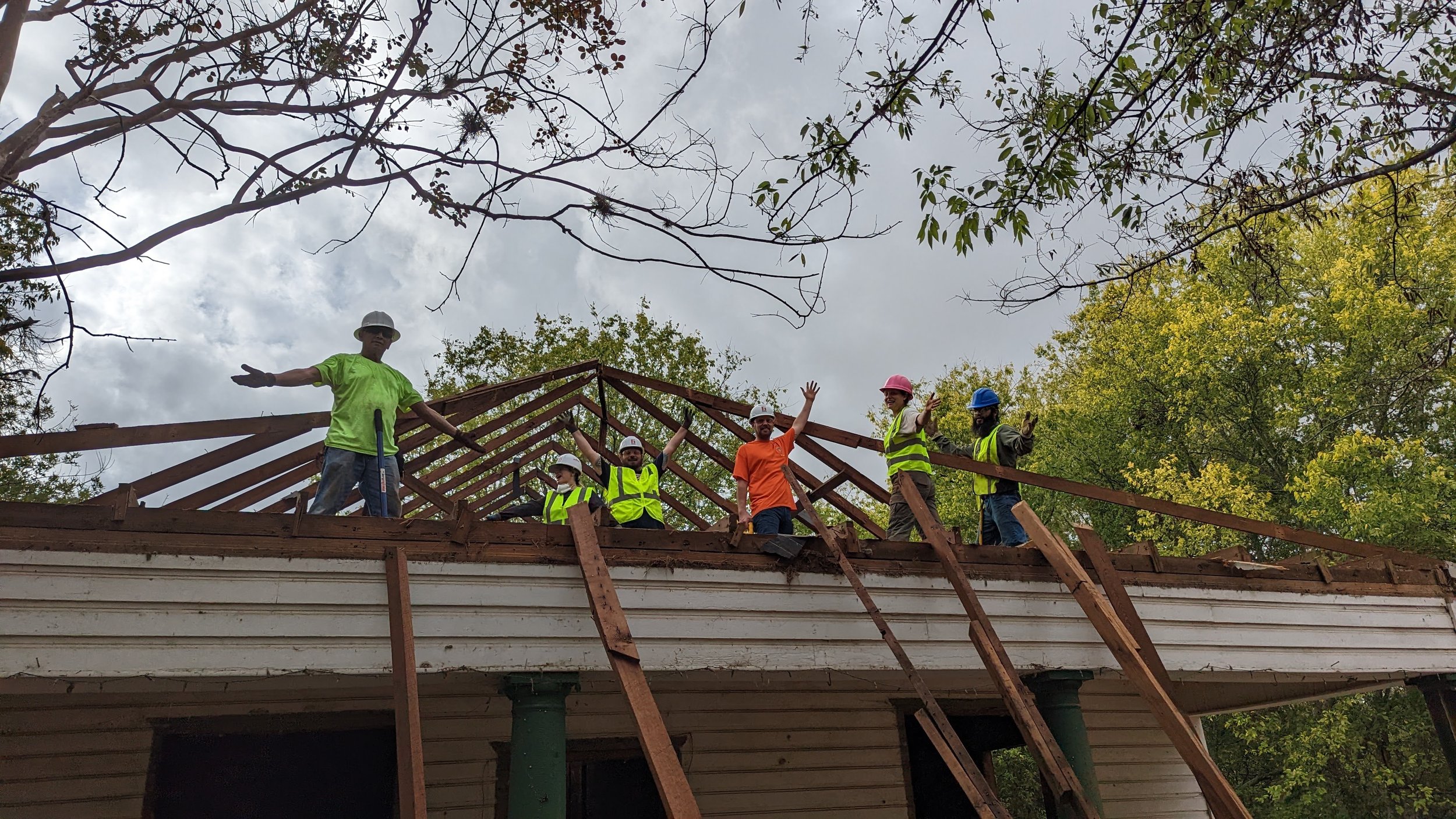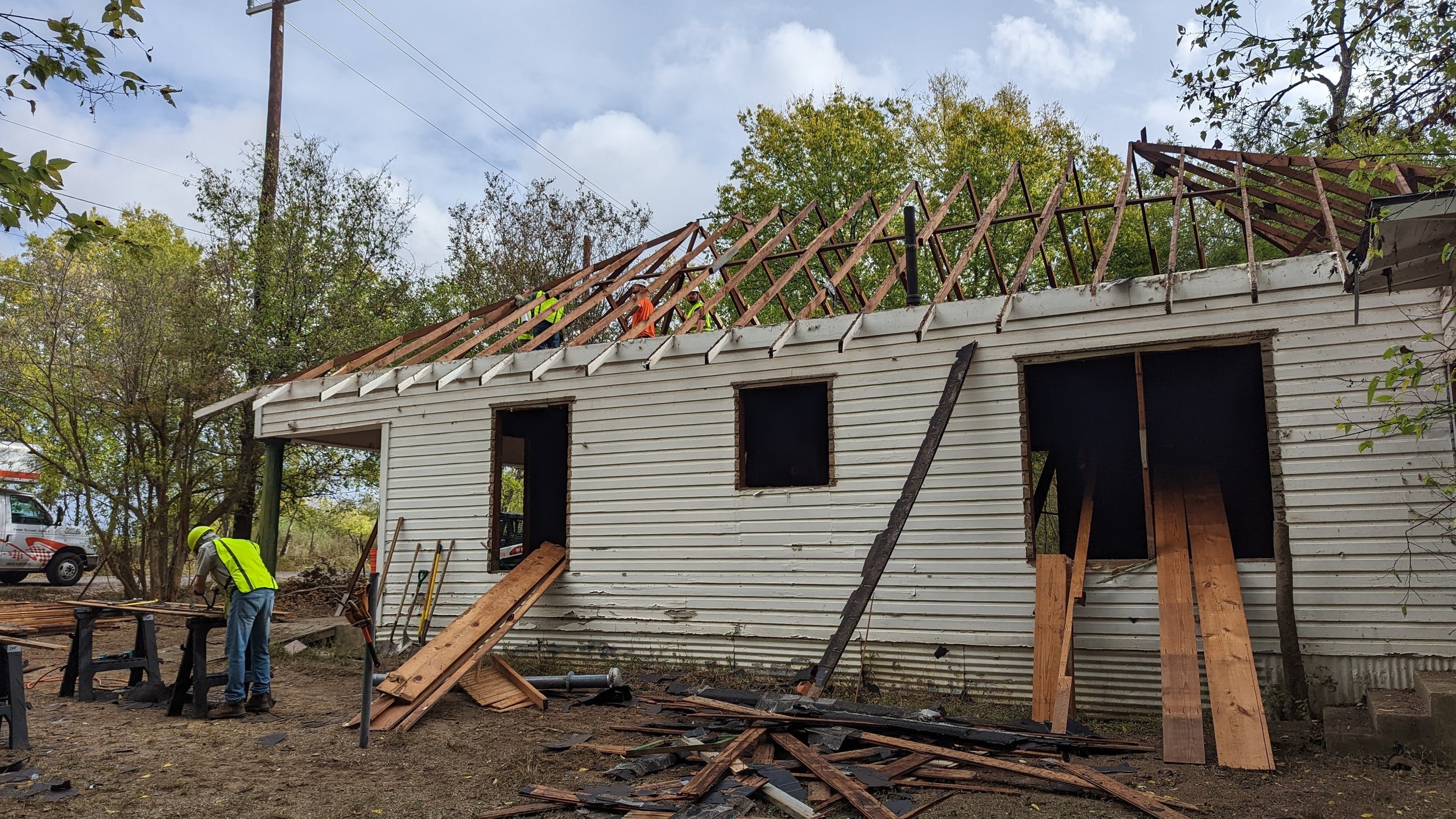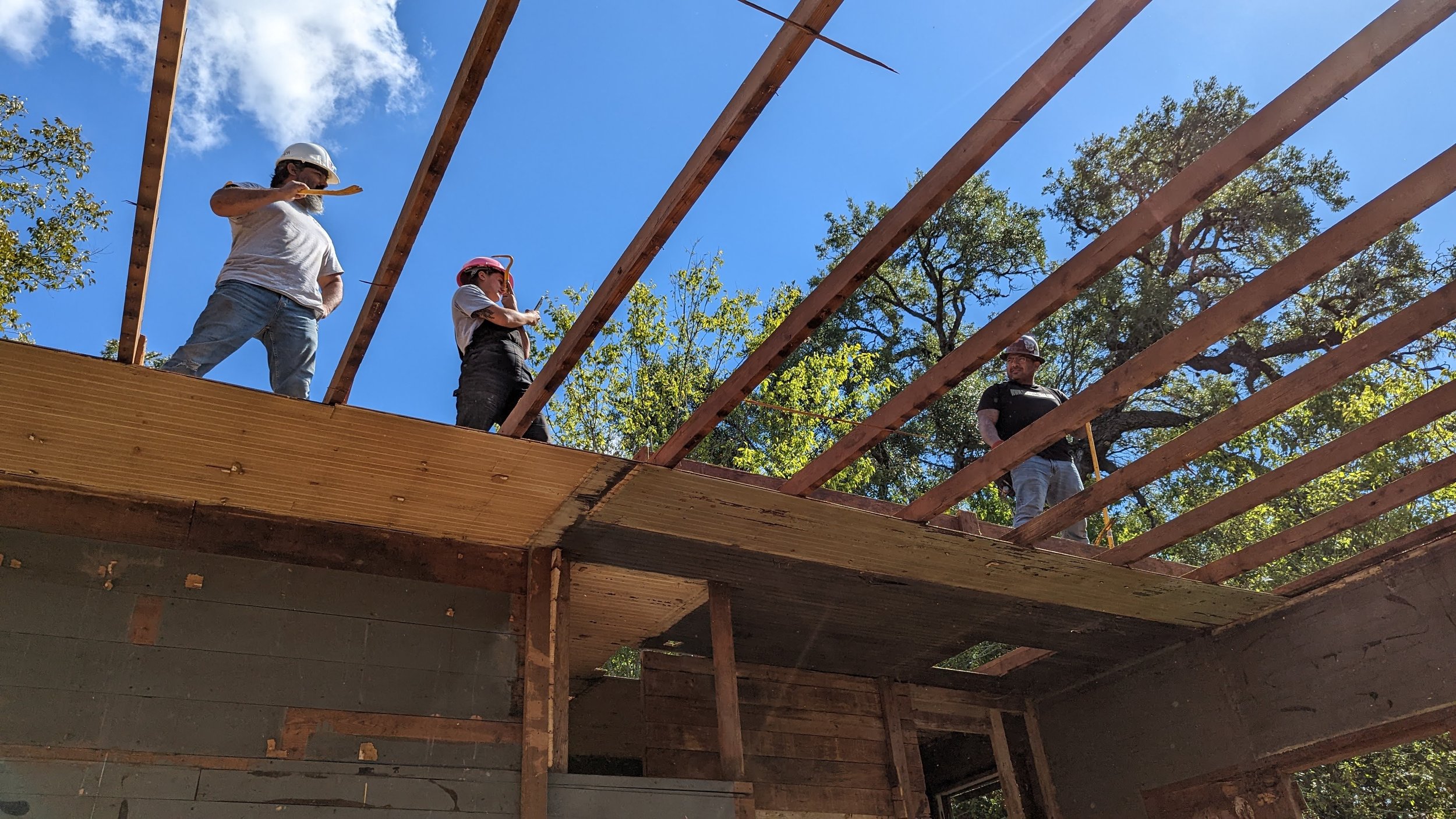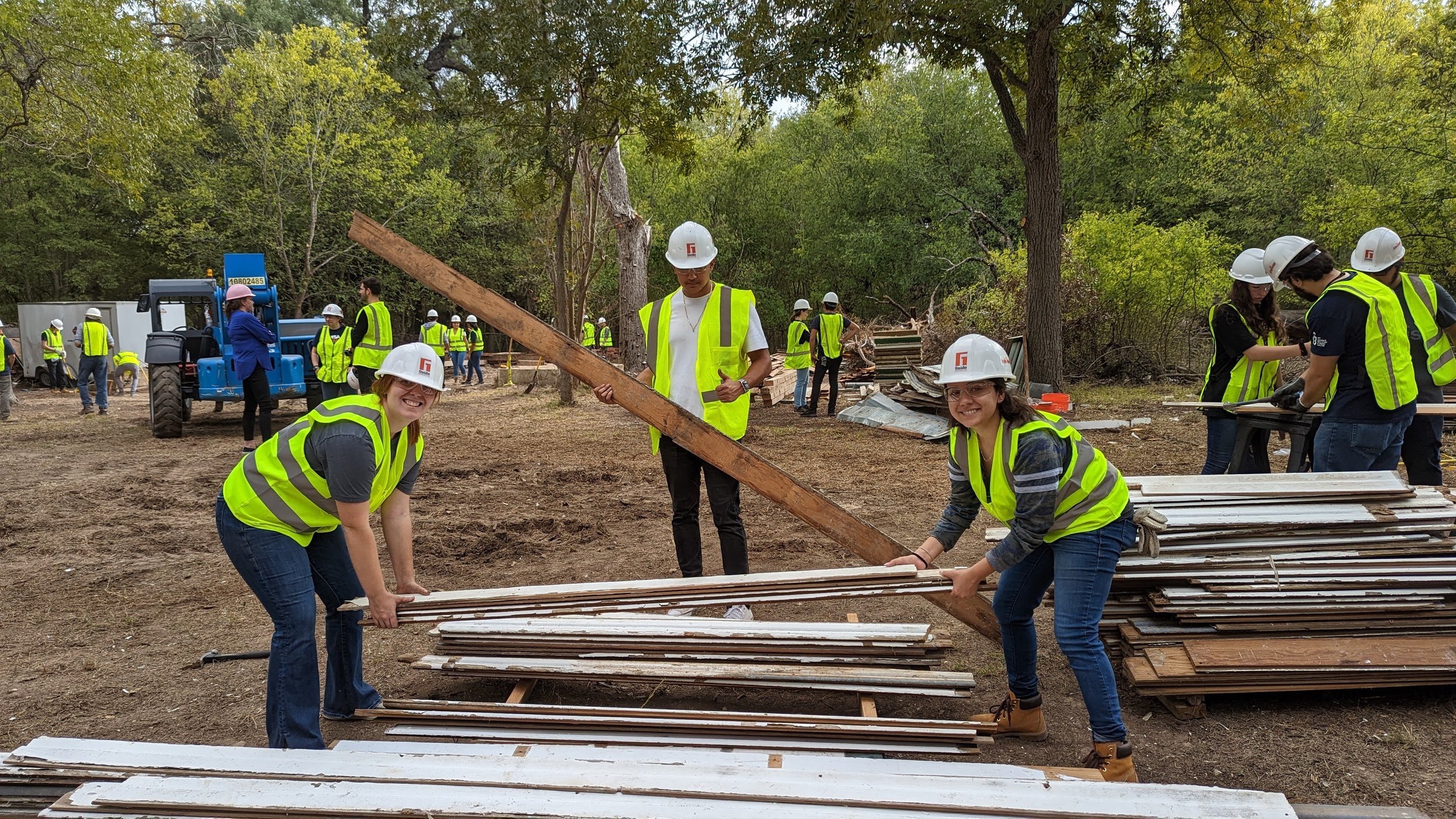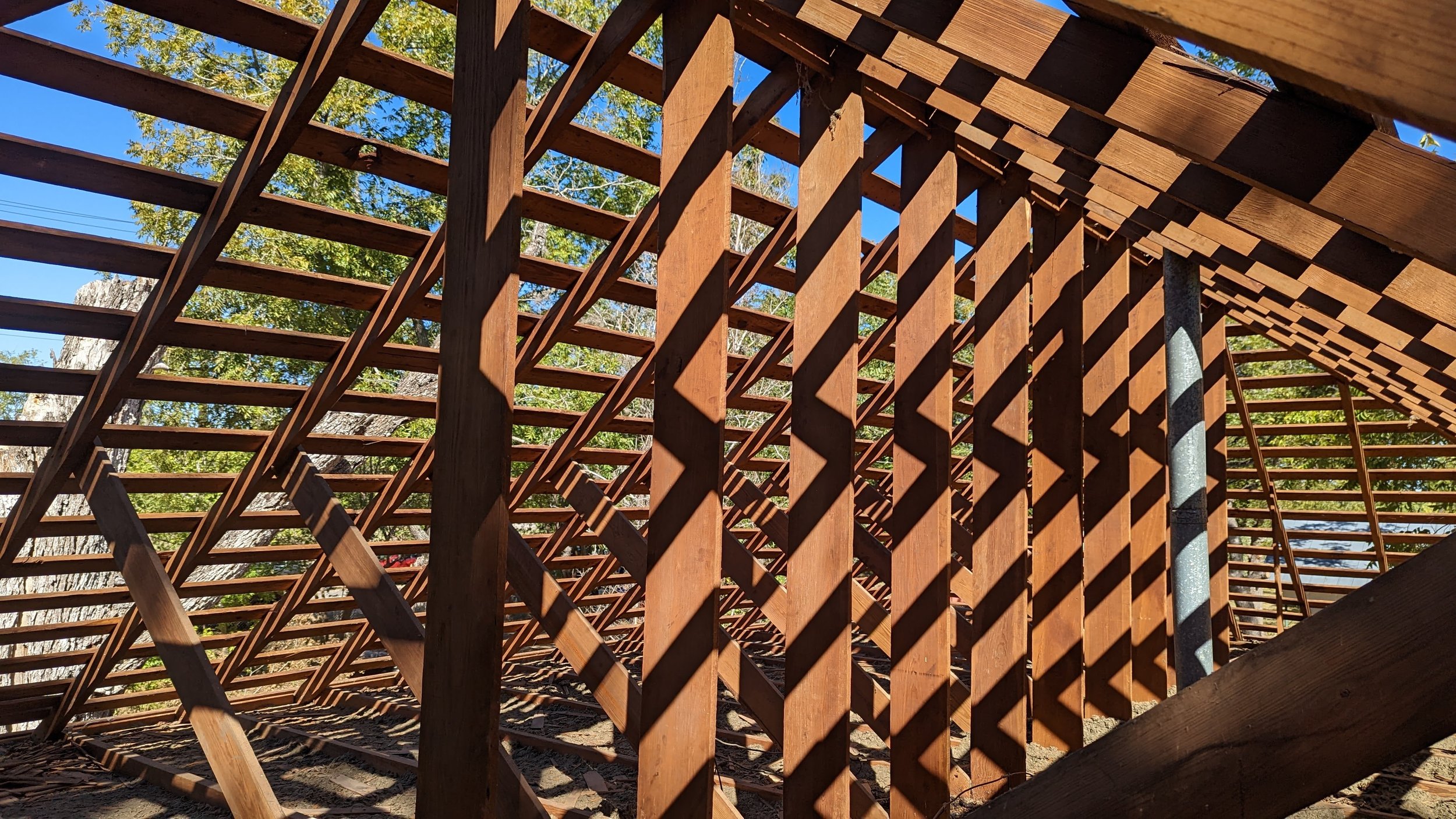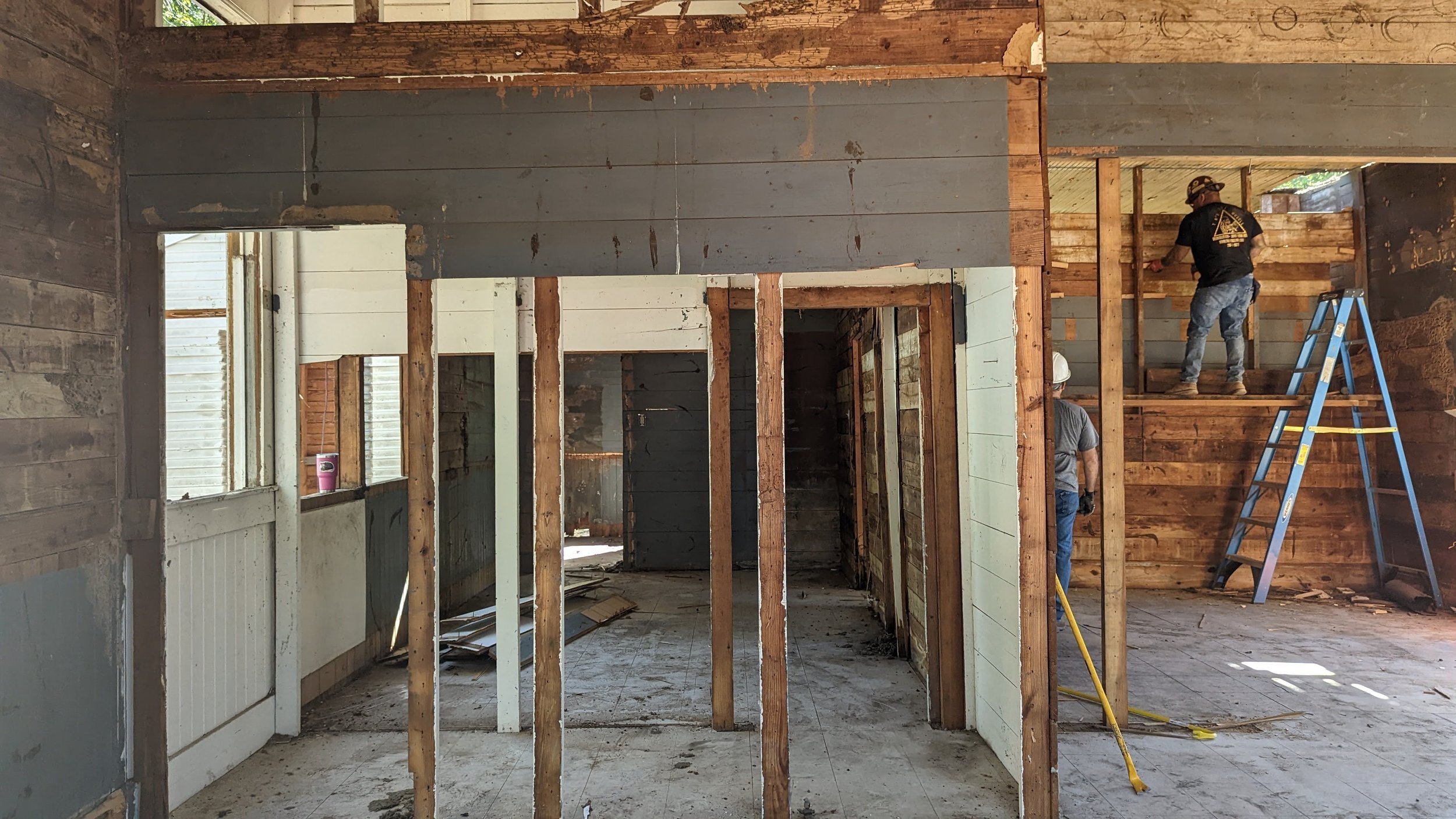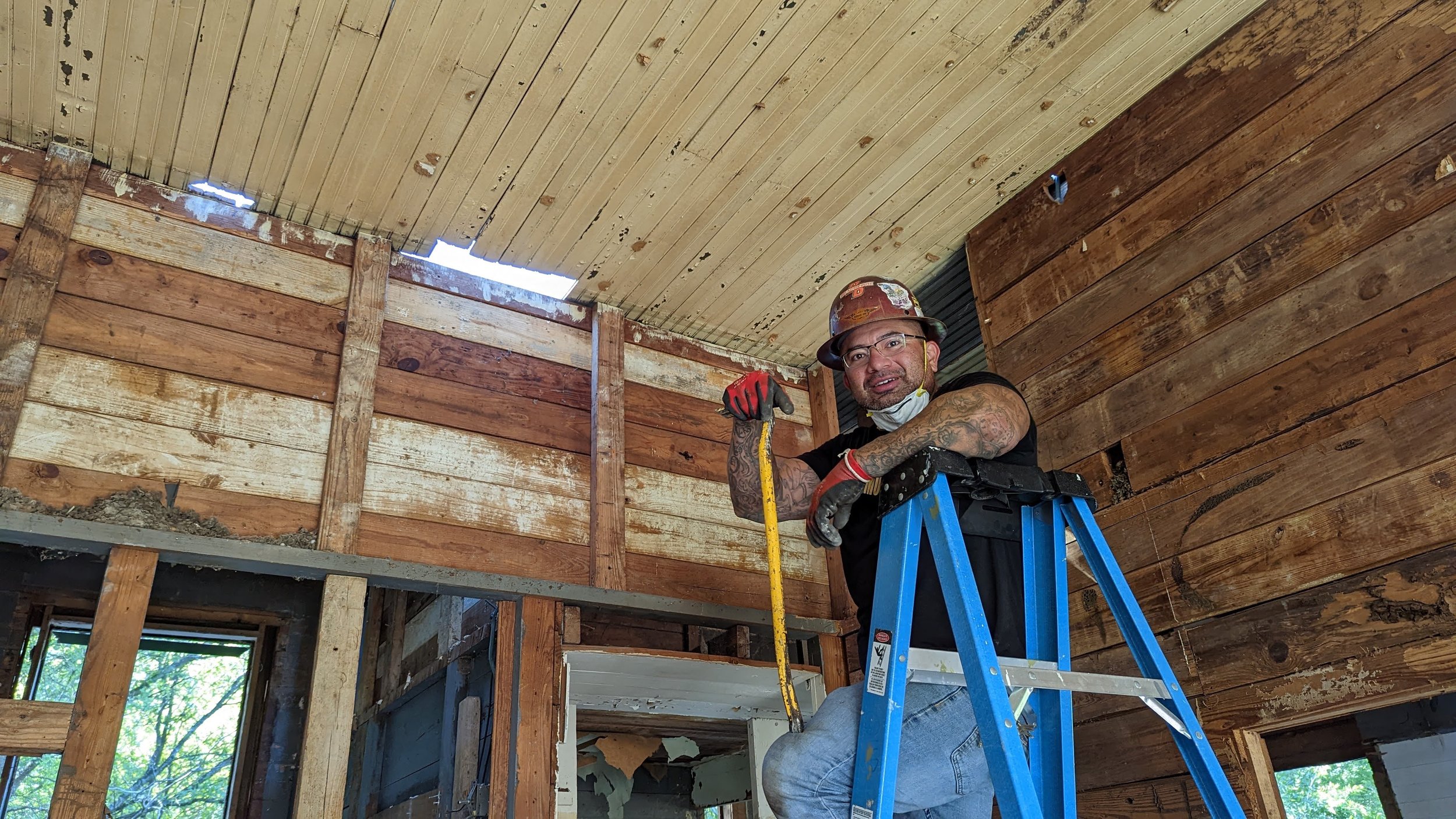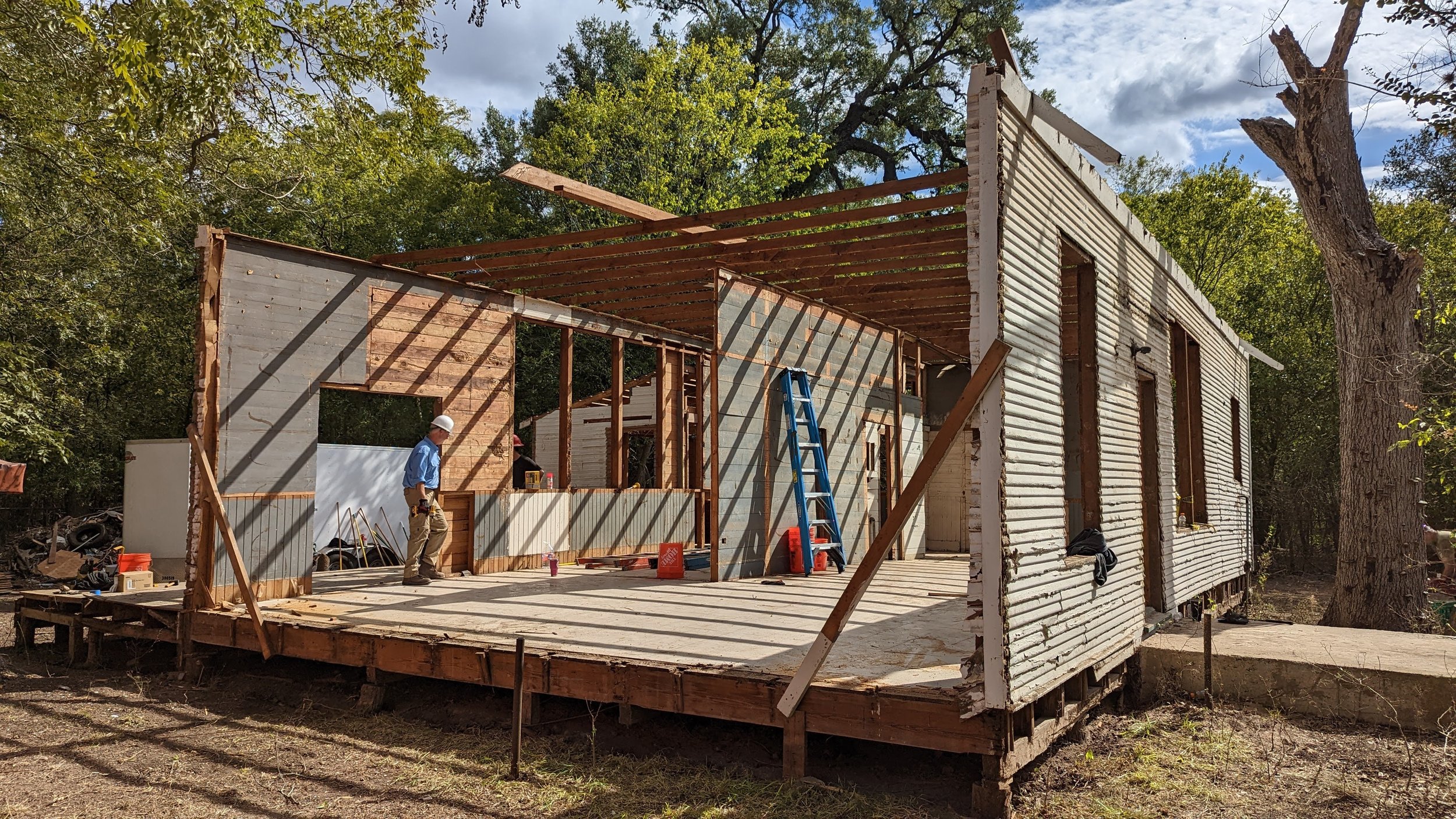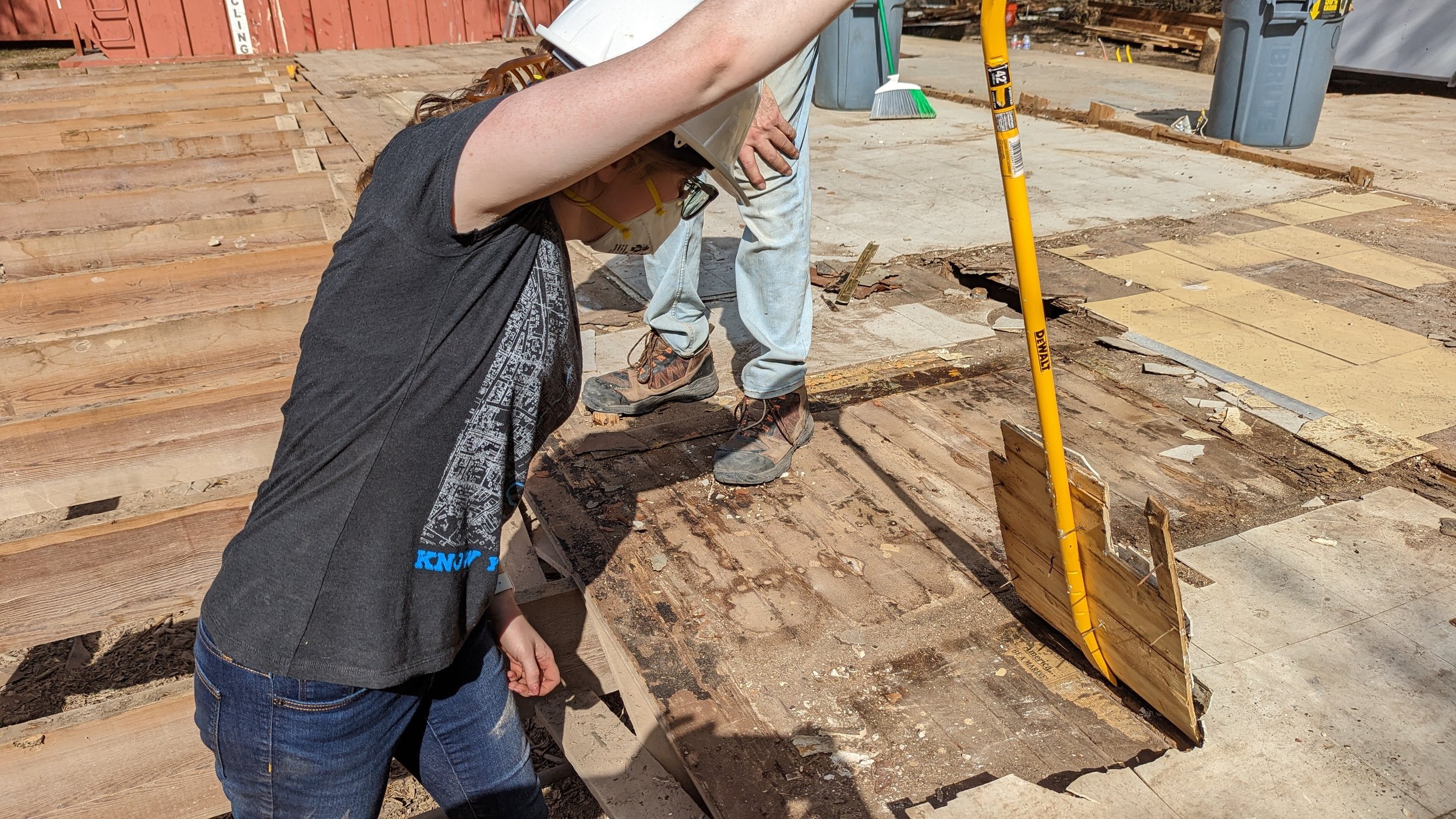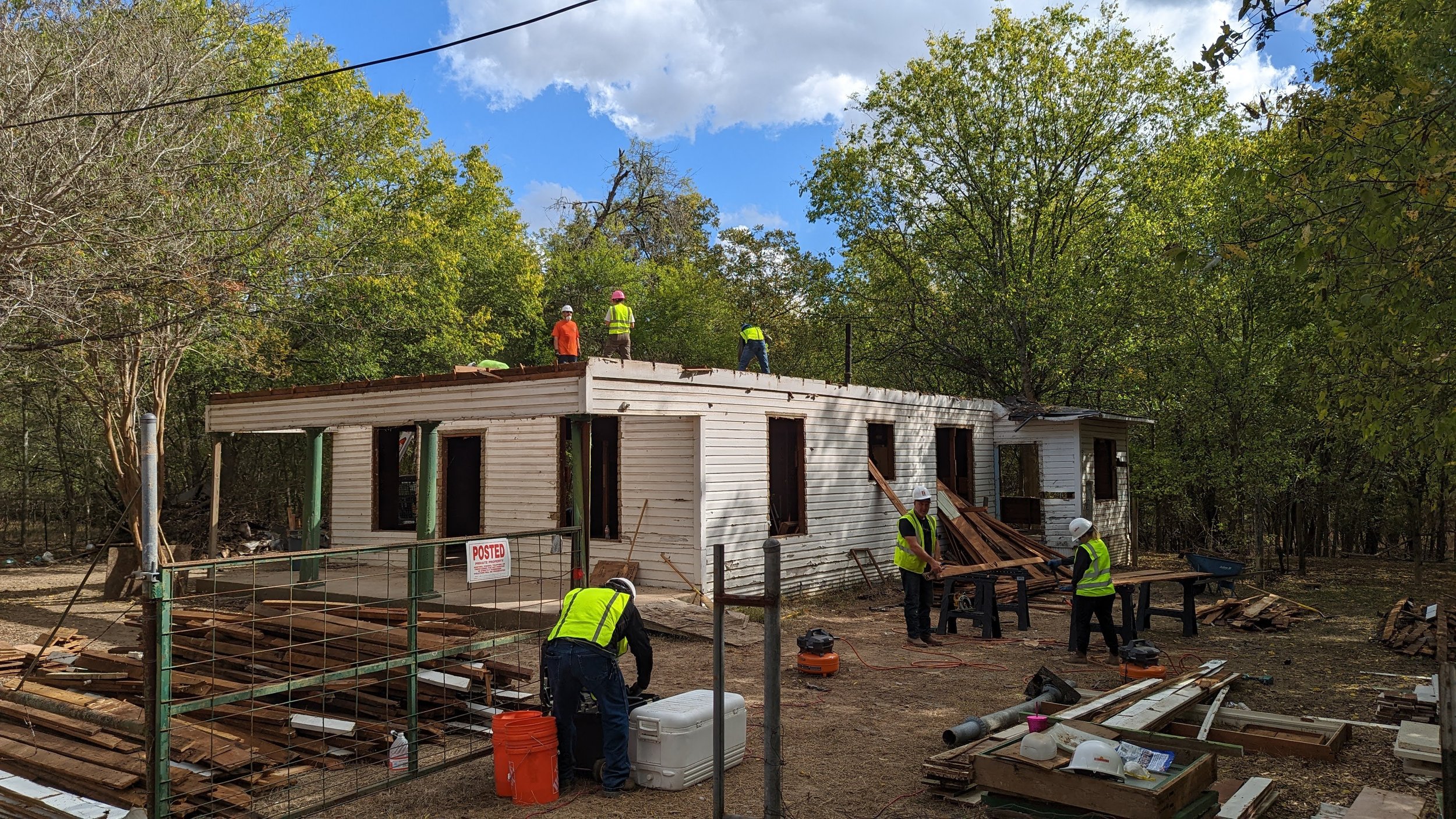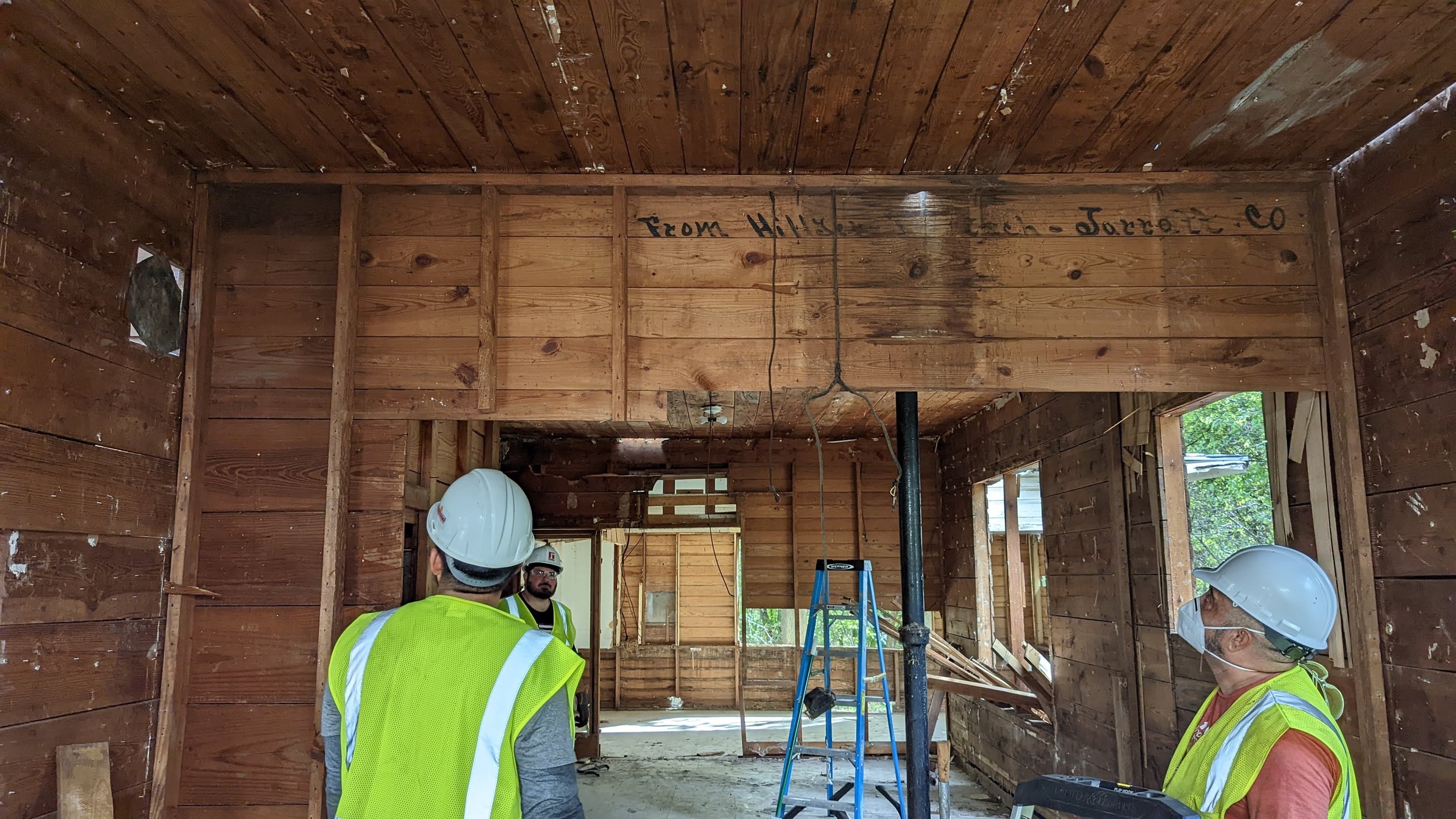Contractor Training: Deconstructing Early 1900s Houses on the Medina River
Pictured above: Trainees celebrating the successful removal of a full wall panel from a circa 1918 house. The photo was taken by Re:Purpose Savannah Executive Director Mae Bowley from the 40’ telescoping forklift (lull) used to lift and move the panel! Once the panel was laid on the ground, the trainees deconstructed it by hand to salvage full pieces of siding and framing.
In October and November 2022, the Office of Historic Preservation hosted Certified Deconstruction Contractor Training in southwest Bexar County in partnership with the San Antonio River Authority. The training included several cohorts aimed at teaching both existing contractors and individuals with non-construction backgrounds techniques for hands-on deconstruction of wood-framed, pre-1930s residential structures.
Our deconstruction trainer was Re:Purpose Savannah, a women+ led 501(c)3 nonprofit that deconstructs historic buildings at the end of their lifecycle, systematically taking structures apart by hand to preserve as much material as possible. Their approach to deconstruction is unique, combining environmental and sustainability goals with heritage conservation and inclusivity. For nearly three weeks, the Re:Purpose Savannah team shared their invaluable time, brilliance, wisdom, experience, and passion with nearly 40 contractors and an an advanced architecture studio from UTSA. They inspired many local contractors to immediately dive into deconstruction as a trade and service to the San Antonio community.
The houses that served as training sites were constructed in the early 1900s as housing for workers for a nearby ranch and their families. The deconstruction contractors-in-training uncovered “Phones 329” painted on a piece of lumber in one of the houses. Earlier in the week, they found the name of the lumber company on another piece of wood in the ceiling: Hillyer-Deutsch-Jarratt Lumber Co. A quick search tied the phone number to the company through a 1911 newspaper ad. The practice of marking lumber was common among businesses, akin to putting your company’s sign in front of an active construction site, but the mark was usually later obscured by interior finishes.
Hillyer-Deutsch-Jarratt partnered with developers like H. C. Thorman on homes across the city; you can see examples of their work in Craftsman residences in the East French Place Historic District. In the 1920s, Maury Maverick served as the company’s sales manager before leaving his work in the lumber and mortgage business to pursue politics.
Information like what trainees found on their worksite helps us better understand not only the history of the home, but also the larger development history of San Antonio while creating connections across time with the people who built our city’s homes and businesses. And this information would likely be lost to the landfill during conventional demolition.
Training Recap Video
To learn more about the city’s Deconstruction and Circular Economy Program and how to become a Certified Deconstruction Contractor, visit our training page.

